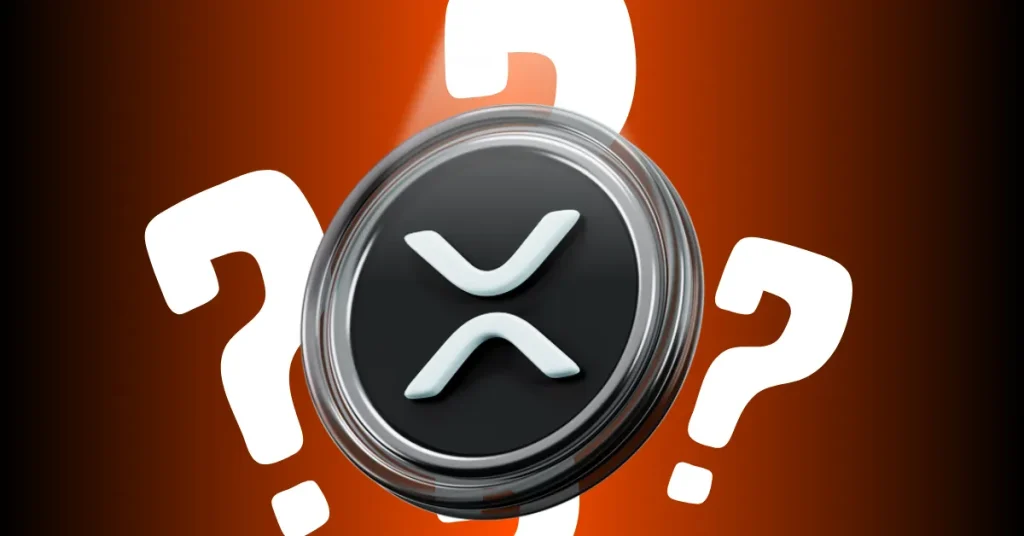
The $175 Million XRP Transfer: A Deep Dive into Chris Larsen’s Move and Its Ripple Effects
Introduction: A Storm in the Crypto Sea
The cryptocurrency market is a volatile landscape, where fortunes can be made or lost in the blink of an eye. Recently, this tumultuous environment was rocked by a significant transaction involving Chris Larsen, co-founder of Ripple, and the cryptocurrency XRP. The transfer of 50 million XRP, valued at approximately $175 million, sent shockwaves through the crypto community, sparking debates, market fluctuations, and regulatory concerns. This report explores the intricacies of this transaction, the reactions it provoked, and the broader implications for XRP and the cryptocurrency market as a whole.
The Transaction: Unraveling the Details
Between July 17 and July 23, 2025, a wallet associated with Chris Larsen executed a series of transactions, moving a substantial amount of XRP. The total transferred was 50 million XRP, with a significant portion—around $140 million—being sent to centralized exchanges. This information was brought to light by on-chain investigator ZachXBT, who highlighted the distribution of the transfer across four different addresses. The timing of this transfer was particularly noteworthy, as it coincided with a period when XRP’s price reached a local high of $3.60, followed by a sharp decline.
The coincidence of the transfer with a price peak has fueled speculation about potential market manipulation or insider trading. Critics argue that the transfer was timed to take advantage of the price surge, potentially at the expense of retail investors. The lack of transparency surrounding the specific activities of the receiving exchanges has only added to the skepticism and concern.
Community and Market Reactions: A Wave of Criticism
The crypto community responded swiftly and critically to the news of Larsen’s XRP transfer. Accusations of “dumping” tokens and market manipulation quickly emerged. The hashtag #XRP became a trending topic on social media platforms, with many expressing disappointment and concern. The market reaction was equally pronounced, with XRP experiencing a notable price drop of approximately 10% in the wake of the news. This price movement further intensified the negative sentiment surrounding the transfer, with investors questioning the motives behind such a large transaction.
The criticism was not limited to the crypto community. Regulatory bodies and legal experts also took notice, raising questions about the potential implications of the transfer. The SEC’s ongoing lawsuit against Ripple added another layer of complexity to the situation, with legal experts debating the implications of on-chain activity in the context of regulatory hurdles.
Speculations and Potential Motivations: Theories and Counterarguments
The motivations behind Chris Larsen’s transfer of $175 million in XRP remain a subject of speculation. Several theories have been proposed, each with its own set of supporting arguments and counterpoints.
Liquidity Provision: A Strategic Move or a Red Flag?
One potential explanation is that the transfer was intended to provide liquidity on exchanges. Market makers often move large amounts of cryptocurrency to facilitate trading and ensure sufficient liquidity for buyers and sellers. In this scenario, the transfer could be seen as a strategic move to support XRP’s trading volume and stability.
However, critics argue that such a large transfer to exchanges, especially during a price peak, is more indicative of a planned sell-off than a genuine effort to enhance liquidity. The opacity surrounding the specific activities of the receiving exchanges adds to the skepticism. Without more information, it remains unclear whether the transfer was truly intended to provide liquidity or if it was a calculated move to capitalize on the market conditions.
Profit-Taking: A Rational Decision or a Betrayal of Trust?
Another theory suggests that Larsen may have been taking profits after XRP’s price rally. Selling a portion of one’s holdings during a price surge is a common practice among investors seeking to capitalize on market conditions. If this was the case, the transfer could be viewed as a rational financial decision, albeit one that triggered negative sentiment due to its size and timing.
The counterargument is that Larsen, as a co-founder of Ripple, has a vested interest in the long-term success of XRP. Critics question why he would choose to sell a significant amount of his holdings, potentially undermining investor confidence and driving down the price. The lack of transparency surrounding Larsen’s overall investment strategy makes it difficult to assess the validity of this explanation. Without more information, it remains speculative whether the transfer was truly part of a well-considered profit-taking strategy.
Strategic Portfolio Rebalancing: A Diversification Move or a Lack of Commitment?
It is also possible that the transfer was part of a broader strategy to rebalance Larsen’s investment portfolio. Diversifying assets and adjusting holdings based on market conditions are standard practices for high-net-worth individuals. In this context, the transfer could be seen as a move to reduce exposure to XRP and allocate capital to other investment opportunities.
However, skeptics point out that the lack of transparency surrounding Larsen’s overall investment strategy makes it difficult to assess the validity of this explanation. Without more information, it remains unclear whether the transfer was truly part of a well-considered portfolio rebalancing plan or if it was a move driven by other motivations.
Regulatory Considerations: Navigating the Legal Landscape
The events surrounding Larsen’s XRP transfer also raise questions about regulatory scrutiny. The cryptocurrency market has been under increasing pressure from regulatory bodies around the world, with concerns about market manipulation, insider trading, and investor protection.
The SEC’s ongoing lawsuit against Ripple adds another layer of complexity to the situation. While legal experts debate the implications of on-chain activity in the context of regulatory hurdles, the fact remains that XRP is operating in a highly regulated environment. Any actions that could be perceived as undermining market integrity are likely to attract heightened scrutiny from regulators.
The lack of transparency surrounding the transfer has only added to the regulatory concerns. In the absence of clear explanations, regulators may be more inclined to scrutinize the transaction and its potential implications. This could have significant consequences for Ripple and the broader cryptocurrency market, as regulatory actions can have a profound impact on market sentiment and price movements.
Transparency and Communication: The Need for Clarity
One of the key criticisms leveled against Ripple and its executives is the lack of transparency surrounding their activities. In the wake of Larsen’s XRP transfer, many called for greater disclosure and communication from Ripple to address concerns and provide clarity about the motivations behind the transfer.
Transparency is crucial for building trust and maintaining confidence in the cryptocurrency market. Clear and timely communication about significant transactions and strategic decisions can help to mitigate concerns and build trust among investors. In the absence of transparency, speculation and uncertainty can run rampant, leading to market volatility and negative sentiment.
The crypto community has long advocated for greater transparency from companies and individuals operating in the space. The events surrounding Larsen’s transfer have only reinforced this call, with many arguing that greater disclosure is necessary to ensure market integrity and investor protection.
Lessons and Future Implications: Charting a Course Forward
The events surrounding Chris Larsen’s XRP transfer offer several important lessons for the cryptocurrency market.
The Importance of Transparency: Building Trust in a Volatile Market
The need for greater transparency in the cryptocurrency market cannot be overstated. Clear and timely communication about significant transactions and strategic decisions can help to mitigate concerns and build trust among investors. In a market characterized by volatility and uncertainty, transparency is essential for maintaining confidence and stability.
The Impact of Influencers: Responsibility and Accountability
The actions of influential figures in the cryptocurrency space can have a significant impact on market sentiment and price movements. It is essential for these individuals to be mindful of the potential consequences of their actions and to act responsibly. The events surrounding Larsen’s transfer have highlighted the need for greater accountability and responsibility from influential figures in the crypto community.
The Role of Regulation: Compliance and Market Integrity
The increasing regulatory scrutiny of the cryptocurrency market highlights the importance of compliance and adherence to legal standards. Companies and individuals operating in this space must be prepared to meet the evolving requirements and to conduct themselves in a manner that promotes market integrity. The events surrounding Larsen’s transfer have underscored the need for greater regulatory compliance and the potential consequences of non-compliance.
The Need for Due Diligence: Informed Investment Decisions
Investors should always exercise due diligence and conduct thorough research before making investment decisions in the cryptocurrency market. Understanding the risks and potential implications of market events is crucial for protecting one’s financial interests. The events surrounding Larsen’s transfer have highlighted the importance of informed decision-making and the need for investors to be vigilant and proactive in their approach to the market.
Conclusion: Navigating the Waters of Cryptocurrency
Chris Larsen’s $175 million XRP transfer has served as a stark reminder of the complexities and challenges inherent in the cryptocurrency market. The events surrounding this transfer have highlighted the importance of transparency, responsible conduct, and regulatory compliance. As the cryptocurrency market continues to evolve, it is essential for all participants to learn from these experiences and to work together to create a more stable, trustworthy, and sustainable ecosystem. The future of XRP, and indeed the broader cryptocurrency landscape, depends on it. By embracing transparency, accountability, and compliance, the crypto community can navigate the volatile waters of the market and build a more resilient and trustworthy ecosystem for all.





